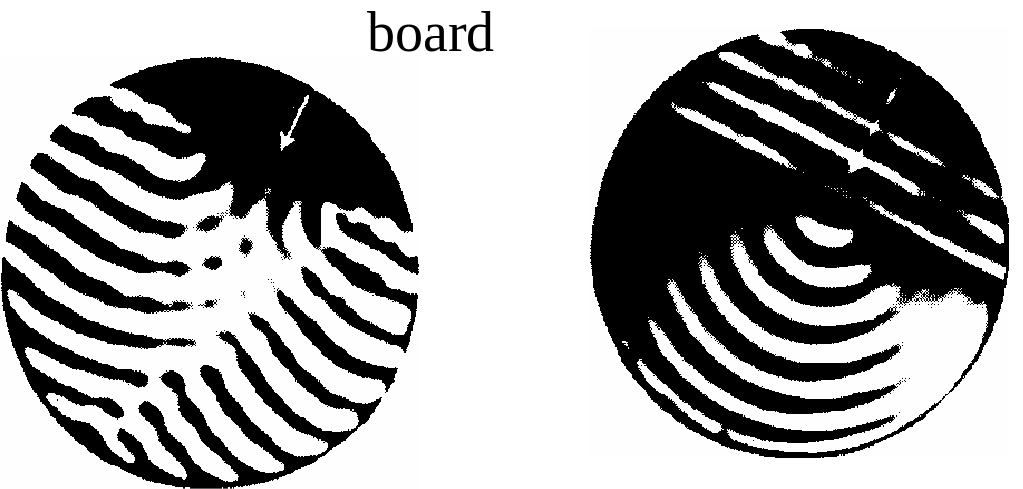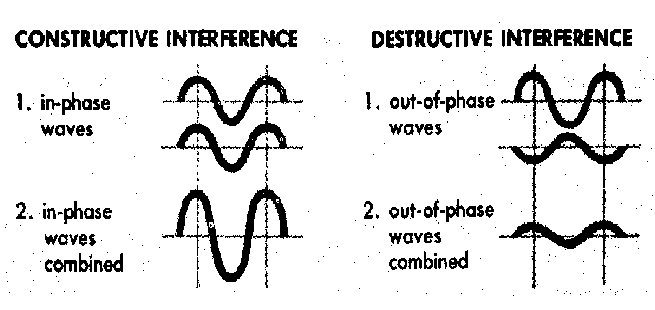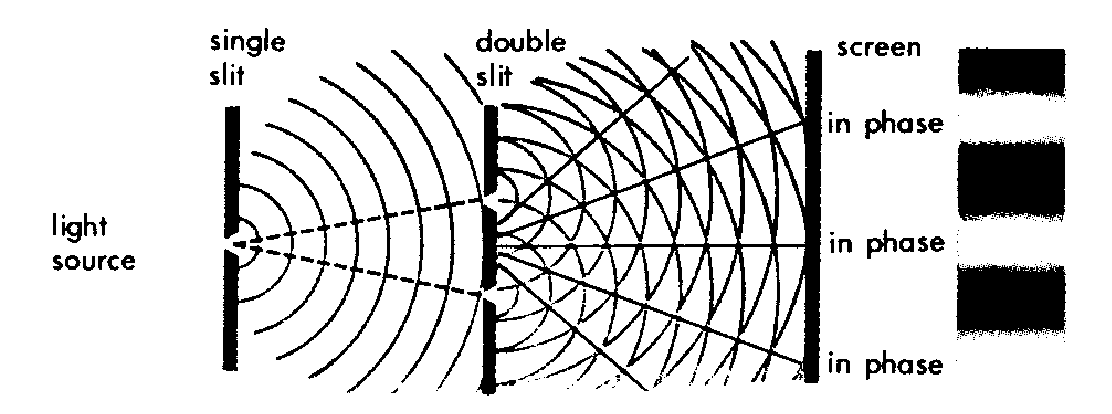
- •Л.П. Маркушевская, с.В. Шенцова, е.В. Соколова optics:
- •Contents
- •The History of Optics
- •Understanding a printed text
- •Comprehensive reading The History of Optics
- •Check your understanding
- •Exercise 2. Complete the sentences:
- •Increase your vocabulary
- •Chapter I Classical (Geometrical) Optics
- •Comprehensive reading From the History of Geometrical Optics
- •Check your understanding Exercise 1. True or false?
- •Exercise 2. Choose the correct answer.
- •Increase your vocabulary
- •A virtual image …
- •Language activity
- •Unit 2 word-study
- •Understanding a printed text
- •Reading for precise information Nature of Light and Color
- •Laws of reflection:
- •Laws of refraction:
- •Check your understanding
- •3 Laws
- •Increase your vocabulary
- •Language activity
- •Unit 3 word-study
- •Understanding a printed text
- •Scan-reading Optical Instruments
- •Check your understanding
- •Increase your vocabulary
- •Language activity
- •Exercise 4. Summarize your knowledge of Past Simple or Past Continuous. Choose the correct tense.
- •Unit 4 word study
- •Understanding a printed text List of Terms:
- •Reading and translating the text Lenses
- •Check your understanding
- •Increase your vocabulary
- •Language activity
- •Unit 5 word study
- •Understanding a printed text List of Terms:
- •Read the text and entitle it
- •Check your understanding
- •Increase your vocabulary
- •Language acitivity
- •Review of the chapter I
- •Supplementary tasks
- •Improve your translation practice task 1
- •The History of the Telescope
- •Exercise 1. Rearrange the sentences in the chronological order.
- •Holography
- •Illumination, never remove protective cover from the
- •Астрономические наблюдения объектов в широком диапазоне длин волн
- •Chapter II Fiber Optics Unit 1
- •Comprehensive reading The History of Fiber Optics
- •Check your understanding Exercise 1. Answer the following questions.
- •Increase your vocabulary Exercise 1. Compare the two columns and find Russian equivalents.
- •Exercise 2. Match the antonyms.
- •Language activity Exercise 1. Summarize your knowledge of Passive Constructions and translate the following sentences.
- •Fiber Optic Systems
- •Fiber Optic Technology
- •Check your understanding
- •Exercise 2. Complete the sentences with words from the text.
- •Increase your vocabulary
- •Language activity
- •Unit 3 word-study
- •Understanding a printed text
- •Reading and translating the text
- •Check your understanding Exercise 1. Which title better suits the text?
- •Increase your vocabulary
- •Language activity
- •Exercise 2. Which of the italicized words in each sentence is the predicate?
- •Unit 4 word study
- •Read – reread;
- •Understanding a printed text
- •Comprehensive reading Optical Fiber Applications
- •Check your understanding
- •Increase your vocabulary
- •Language activity
- •Rewiew of the chapter II
- •Supplementary tasks
- •Improve your translation practice task 1
- •Fiber Optic Economics
- •Exercise 1. Answer the questions.
- •Exercise 2. Translate the following parentheses into Russian.
- •How Optical Fibers Work
- •Chapter III
- •Word study
- •Understanding a printed text
- •Amplifier – усилитель
- •Reading for discussion Maser-Laser History
- •Check your understanding
- •Increase your vocabulary
- •Language activity
- •Unit 2 word study
- •Understanding a printed text
- •Reading for precise information Types of Lasers
- •Solid-State Lasers
- •Gas Lasers
- •Semiconductor Lasers
- •Free-Electron Lasers
- •Liquid Lasers (Dye Lasers)
- •Chemical Lasers
- •Check your understanding
- •Increase your vocabulary
- •Language activity
- •Comprehensive reading Solid - State Lasers
- •Semiconductor Lasers
- •Check your understanding
- •Increase your vocabulary
- •Adjectives
- •Language activity
- •Unit 4 word-study
- •Understanding a printed text
- •Comprehensive reading Gas and Molecular Lasers Gas Lasers
- •Fig.1. Construction of He-Ne laser
- •Molecular Lasers
- •Check your understanding
- •Increase your vocabulary
- •Language activity
- •Exercise 3. Summarize your knowledge on non-Finite forms. Define the form of the underlined words (Infinitive, Participle - I, Participle - II, Gerund). Translate the sentences.
- •Unit 5 word study
- •Verb – noun
- •Understanding a printed text
- •Scan-reading Laser Applications
- •Industry
- •Scientific Research
- •Communication
- •Medicine
- •Military Technology
- •Laser Safety
- •Check your understanding
- •Increase your vocabulary
- •Exercise 2. Translate the following word combinations with Participle II as an attribute.
- •Language activity
- •Exercise 3. Cross out “that”, “who”, “which”, “when” if one can manage without them. Underline the subject in the second sentence.
- •Supplementery tasks
- •Improve your translation practice
- •Лазерная сварка
- •Лазеры в медицине
- •How a Laser Works The Basics of an Atom
- •The Connection Between Atoms and Lasers
- •Understanding a printed text
- •Lasers in Communication
- •Laser Uses
- •Appendix I Химические формулы
- •Appendix II
- •Appendix III Business Communication
- •I. Introduction. Writing and Speaking – Your Keys to Business Success.
- •II. The job campaign
- •Working Experience
- •Curriculum vitae
- •Education
- •III. Business letters
- •I. Introducing your firm (the body the message of a letter).
- •II. Official Invitations
- •III. Request
- •IV. Claim, protest!
- •V. Gratitude, thanks.
- •VI. Regret, apology
- •Supplementary reading appendix IV Albert Einstein
- •Arthur l. Schawlow
- •Charles h. Townes
- •Aleksandr m. Prokhorov
- •Nicolay g. Basov
- •Ted Maiman and the world's first laser
- •Dictionary
- •Haze, n – туман, дымка
- •Observe, V – наблюдать
- •Optics, n – оптика, оптические приборы
- •Literature
Laws of reflection:
Angle of reflection equals to angle of incidence.
Incident and reflected rays lie in the same plane.
Incident and reflected rays are on opposite sides of the normal - a line perpendicular to the reflecting surface and passing through the point of incidence.
Refraction is the bending of a light ray when it crosses the boundary between two different materials, as from air into water. This change in direction is due to a change in speed. Light travels faster in empty space and slows down upon entering matter. Its speed in air is almost the same as its speed in space, but it travels only 3/4 as fast in water and only 2/3 as fast in glass. The refractive index of a substance is the ratio of the speed of light in space (or in air) to its speed in the substance. This ratio is always greater than one.
When a beam of light enters a plane of glass perpendicular to the surface, it slows down, and its wavelength in the glass becomes shorter in the same proportion. The frequency remains the same. Coming out of the glass, the light speeds up again, the wavelength returning to its former size.
When a light ray strikes the glass at some other angle, it changes direction as well as speed. Inside the glass, the ray bends toward the perpendicular or normal. If the two sides of the glass are parallel, the light will return to its original direction when it leaves the glass, even though it has been displaced in its passage. If the two sides of the glass are not parallel, as in the case of a prism or a lens, the ray emerges in a new direction.
Laws of refraction:
Incident and refracted rays lie in the same plane.
When a ray of light passes at an angle into a denser medium, it is bent towards the normal, hence the angle of refraction is smaller than the angle of incidence.
Scattering is the random deflection of light rays by fine particles. When sunlight enters through a crack, scattering by dust particles in the air makes the shaft of light visible. Haze is a result of light scattering by fog and smoke particles.
Absorption of light as it passes through matter results in the decrease in intensity. Absorption, like scattering, may be general or selective. Selective absorption gives the world most of the colors we see. Glass filters which absorb part of the visible spectrum are used in research and photography.
Diffraction is the bending of waves around an obstacle. It is easy to see this effect for water waves. They bend around the corner of a sea wall, or spread as they move out of a channel. Diffraction of light waves, however, is harder to observe. In fact, diffraction of light waves is so slight that it escaped notice for a long time. The amount of bending is proportional to the size of light waves – about one fifty-thousandth of an inch (5,000 Å) – so the bending is always very small indeed.
When light from a distant street lamp is viewed through a window screen it forms a cross. The four sides of each tiny screen hole act as the sides of a slit and bend light in four directions, producing a cross made of four prongs of light. Another way to see the diffraction of light waves is to look at a distant light bulb through a very narrow vertical slit. Light from the bulb bends at both edges of the slit and appears to spread out sideways, forming an elongated diffraction pattern in a direction perpendicular to the slit.
Light can be imagined as waves whose fronts spread out in expanding concentric spheres around a source. Each point on a wave front can be thought of as the source of a new disturbance. Each point can act as a new light source with a new series of concentric wave fronts expanding outward from it. Points are infinitely numerous on the surface of a wave front as it crosses an opening.
As new wave fronts fan out from each point of a small opening, such as a pinhole or a narrow slit, they reinforce each other when they are in phase and cancel each other when they are completely out of phase. Thus lighter and darker areas form the banded diffraction patterns.
A pattern of waves will move outward, forming concentric circles, if small pebbles are dropped regularly from a fixed point into a quiet pond. If a board is placed in the path of these waves, they will be seen to bend around the edges of the board, causing an interesting pattern where the waves from the two edges of the board meet and cross each other. When an obstruction with a vertical slit is placed in the pond in the path of the waves, the waves spread out in circles beyond the slit.
D iffraction
patterns
are formed when light from a point source passes through pinholes and
slits. A pinhole gives a circular pattern and a slit gives an
elongated pattern. A sharp image is not formed by light passing
through because of diffraction. As the pinhole or slit gets smaller,
the diffraction pattern gets larger but dimmer. In the diffraction
patterns shown below the alternate light and dark spaces are due to
interference between waves arriving from different parts of the
pinhole or slit.
iffraction
patterns
are formed when light from a point source passes through pinholes and
slits. A pinhole gives a circular pattern and a slit gives an
elongated pattern. A sharp image is not formed by light passing
through because of diffraction. As the pinhole or slit gets smaller,
the diffraction pattern gets larger but dimmer. In the diffraction
patterns shown below the alternate light and dark spaces are due to
interference between waves arriving from different parts of the
pinhole or slit.
Fig.1.
Interference is an effect that occurs when two waves of equal frequency are superimposed. This often happens when light rays from a single source travel by different paths to the same point. If, at the point of meeting, the two waves are in phase (vibrating in unison, and the crest of one coinciding with the crest of the other), they will combine to form a new wave of the same frequency. The amplitude of the new wave is the sum of the amplitudes of the original waves. The process of forming this new wave is called constructive interference.
If the two waves meet out of phase (crest of one coinciding with a trough of the other), the result is a wave whose amplitude is the difference of the original amplitudes. If the original waves have equal amplitudes, they may completely destroy each other, leaving no wave at all. Constructive interference results in a bright spot; destructive interference producing a dark spot.
Partial constructive or destructive interference results whenever the waves have an intermediate phase relationship. Interference of waves does not create or destroy light energy, but merely redistributes it.
Two waves interfere only if their phase relationship does not change. They are then said to be coherent. Light waves from two different sources do not interfere because radiations from different atoms are constantly changing their phase relationships. They are non-coherent.
Interference occurs when light waves from a point source (a single slit) travel by two different paths (through the double slit). Their interference is shown by a pattern of alternate light and dark bands when a screen is placed across their path.

Fig.2.

Fig.3.
